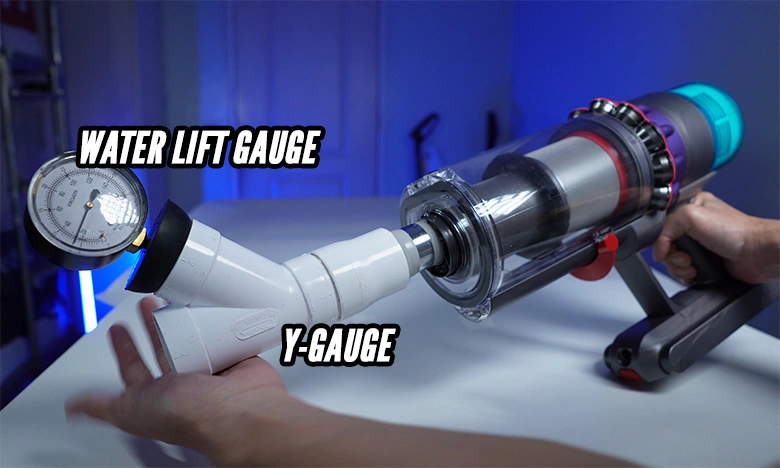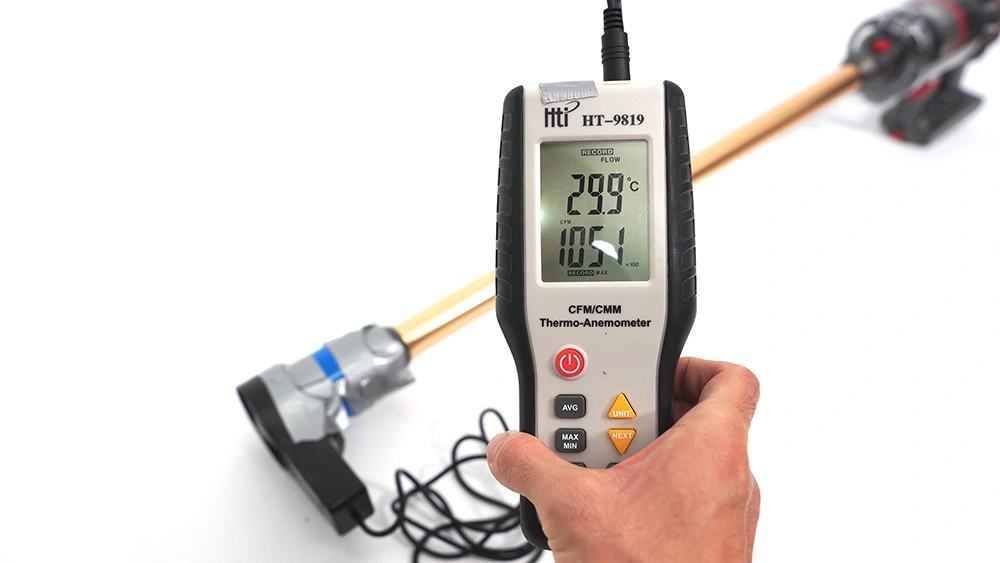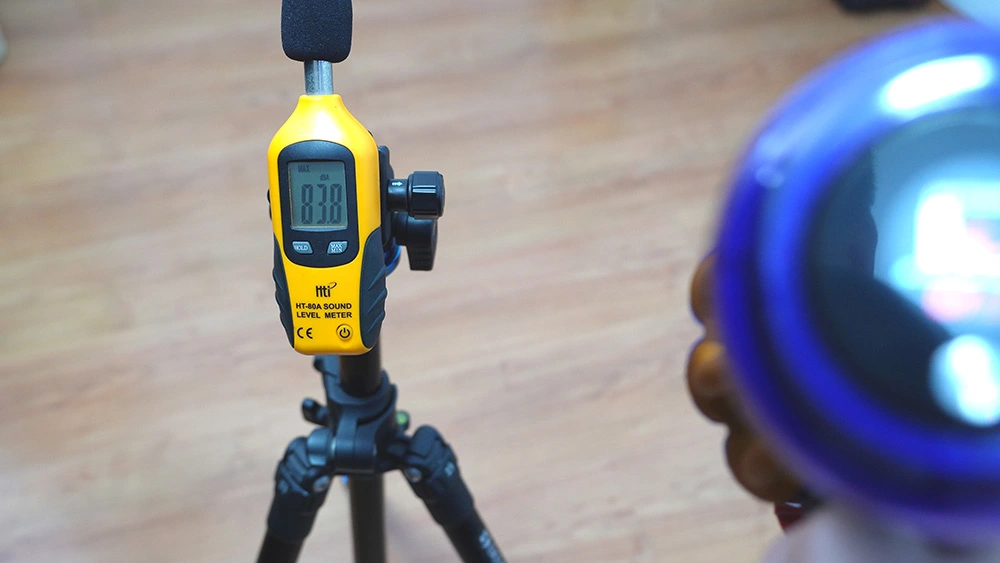Every product featured on this blog undergoes a meticulous, hands-on testing process designed to reveal its true strengths and weaknesses. I examine everything — from raw power to cleaning performance and overall usability — to help you understand what it’s like to live with each vacuum on a day-to-day basis.
Some products, such as robot vacuums, undergo additional testing. These include navigation and coverage experiments to assess how efficiently they navigate around obstacles and whether they can reach the tricky corners of your home.
Below, I’ll walk you through the specific tests I use, how I conduct them, and what each one tells me about a vacuum’s performance.
Note: My testing methods continue to evolve as I find better ways to evaluate these machines. I update this page whenever I introduce new metrics or refine existing ones.
Suction Power
Suction is one of the first things people look at — and for good reason. There’s a direct correlation between suction and cleaning performance. Stronger suction usually means better pickup, especially on heavier debris.
For this test, I use two tools: a water lift gauge and a Y-gauge. This setup gives me consistent, repeatable results.

Early on, I tried using the water lift gauge directly on the vacuum with a short pipe, but the readings were inconsistent — especially with high-powered models that often triggered filter-clogging errors.
The trade-off with this current setup is that it doesn’t measure suction directly at the nozzle, so it can’t capture how much power actually reaches the floor head. Still, it’s an accurate baseline for comparing suction across models.
Airflow

To measure airflow — another important indicator of cleaning power — I use an anemometer. While suction measures how strongly air is pulled, airflow shows how much air actually moves through the vacuum.
It’s a versatile test since I can take readings from the nozzle, wand, and even the main body. Generally, vacuums with higher airflow perform better on carpets and can lift heavier debris like pet litter more effectively.
Airflow testing also helps verify marketing claims. For instance, when the Dyson Gen5 Detect came out at over $1,000, I found it had less airflow than the cheaper V15 Detect — and my cleaning tests confirmed similar real-world performance. The extra cost was primarily for the added features, not increased power.
(Small disclaimer): My airflow setup utilizes a custom-made cardboard box rig, so while the results aren’t lab-certified, they’re consistent and comparable across all models I test.
Cleaning Experiments

This is where things get real. Cleaning experiments are the heart of every review — because numbers don’t matter if the vacuum can’t actually clean well.
Each vacuum is tested on both hard floors and carpets using six types of debris: oats, coffee grounds, quinoa, pet litter, sand, and hair.
I scatter a measured amount of debris, vacuum it up, and then weigh the bin before and after to calculate pickup efficiency.
For carpets, I test on both low-pile and medium-pile rugs. On the medium pile, I also run a deep-clean test by rubbing 100 grams of sand deep into the fibers to see how much the vacuum can extract.
This test is especially important for homeowners with extensive carpeting — it reveals which models have the necessary agitation and suction to clean deep-down dirt.
Filtration

Filtration often gets overlooked, but it’s crucial — especially for allergy sufferers. Many brands claim their vacuums have HEPA filters, but few actually seal properly.
To verify this, I run a fog test. This is a stress test where I fill the vacuum’s dustbin with fog to see if any leaks escape through the seams or vents.
Think of the fog as a stand-in for microscopic allergens. If fog escapes, that means fine dust and dander will too — regardless of what the marketing claims.
A vacuum with true HEPA performance should keep all the fog contained inside the dustbin.
Run Time

Battery life is another key factor when choosing a cordless vacuum. Fortunately, battery technology has advanced significantly.
Most mid-range models now last around 30 minutes, while high-end options can last up to an hour. In my experience, manufacturer claims are generally accurate.
Earlier, I tested run time using a non-powered tool, but I’ve since updated the process. Now I test with the main cleaning nozzle on both hard floors and carpet, which provides a much more realistic benchmark.
The process is simple: I fully charge the vacuum, run it until it stops, and record the time.
Just remember — lithium-ion batteries degrade over time. To maximize their lifespan, try not to let the battery fully drain before recharging. Premium brands like Dyson use smart charging systems that cut off power when the battery’s full, but cheaper models often don’t.
Ergonomics
There’s no precise formula for measuring how comfortable a vacuum feels in your hands — it’s something you can only judge through everyday use. That’s why, instead of relying on specs alone, I test each model by actually cleaning floors, furniture, and tight corners around my home.
A vacuum’s weight tells part of the story, but it doesn’t paint the whole picture. Two machines can weigh the same, yet feel completely different once you start cleaning. That’s where weight distribution and steering design come into play.
A well-balanced vacuum feels lighter than it is because the motor and battery are positioned closer to your hand, allowing for a more comfortable grip. On the other hand, a top-heavy design can quickly cause wrist or shoulder fatigue — especially during long cleaning sessions or when reaching overhead.
Steering is another key factor. Some vacuums glide effortlessly around furniture with a gentle twist of the wrist, while others fight you every step of the way. A good ergonomic design should feel natural — almost like the vacuum is following your lead, not the other way around.
Ultimately, no lab test can ideally quantify comfort. It comes down to how the vacuum handles in real-world conditions — turning, lifting, reaching, and storing. That’s why I rate ergonomics based on actual use rather than numbers on a spec sheet.
Noise

There’s no getting around it — all vacuums make noise. But not all noise is created equal. Some produce a low, consistent hum that fades into the background, while others scream like a jet engine on takeoff.
I measure noise levels using a decibel meter placed near the vacuum during operation, this mimics actual use where the vacuum is beside you. This gives a rough idea of how loud each model is, but numbers only tell part of the story. A vacuum might measure 75 decibels on paper, yet still sound harsher than one rated at 80, depending on the pitch and tone of the motor.
That’s why I combine readings with real-world use. I pay attention to how tolerable the sound feels during longer cleaning sessions, and whether specific modes (like “Boost” or “Max”) push the volume to uncomfortable levels.
A well-designed vacuum manages to strike a balance between power and noise — strong enough to clean effectively without disturbing the neighbors. So while decibel readings are helpful, the ultimate test is simple: can you comfortably hold a conversation or watch TV in the same room while it’s running?
Durability and Build Quality
Performance means little if the vacuum can’t hold up over time. That’s why I also look closely at build quality — how each part feels, fits, and functions after repeated use.
Some vacuums may appear sleek out of the box, but they often start showing wear after just a few months. I check for flexing plastic, weak latches, and connection points that feel loose or wobbly. A solidly built vacuum should click together firmly and hold that connection even after dozens of attachment swaps or bin removals.
I also test how resistant each model is to scratches and scuffs, especially around high-contact areas like the nozzle and dustbin. Premium models often feature reinforced plastics or rubberized edges that can withstand more abuse, while cheaper ones may feel brittle or creaky under pressure.
Durability isn’t just about toughness — it’s about longevity. A well-built vacuum should still feel stable and reliable years after purchase, not like a toy that’s one drop away from cracking.
Editorial note: I’m only able to do this test after owning the vacuum for several years. Some brands I use eventually fail (usually due to the battery), while others last without any issues.
Ease of Maintenance
The best vacuum isn’t just powerful — it’s one you actually want to maintain. That’s why I also evaluate how easy it is to clean filters, empty bins, and remove tangled hair from brush rolls.
I inspect whether the dustbin empties cleanly, without debris sticking to the sides, and whether the filters are washable or require frequent replacements. Some brands design their vacuums so well that routine maintenance takes seconds — others turn it into a chore.
I also check how easy it is to disassemble key parts for deeper cleaning. If removing the roller head or accessing the brush bar requires a screwdriver or three different steps, that’s a knock against usability.
Hair tangle management is another big one. Vacuums that include self-cleaning brush rolls or easy-access doors for detangling earn extra points for saving you time (and frustration).
At the end of the day, maintenance convenience plays a significant role in how long your vacuum performs like new — and whether you’ll actually keep up with it.
Final Thoughts
Testing vacuums isn’t about chasing numbers — it’s about understanding how they actually perform in the real world. Every test I run, from suction to noise to ergonomics, is designed to provide you with a clear and honest picture of what to expect before you make a purchase.
My goal isn’t to declare a “best vacuum” for everyone — because that doesn’t exist. It’s designed to help you find the right one for your home, floors, and lifestyle.
As technology evolves, so will my methods. I’m constantly refining my tests to make them more accurate, more relevant, and more useful for readers who genuinely care about what they’re buying.